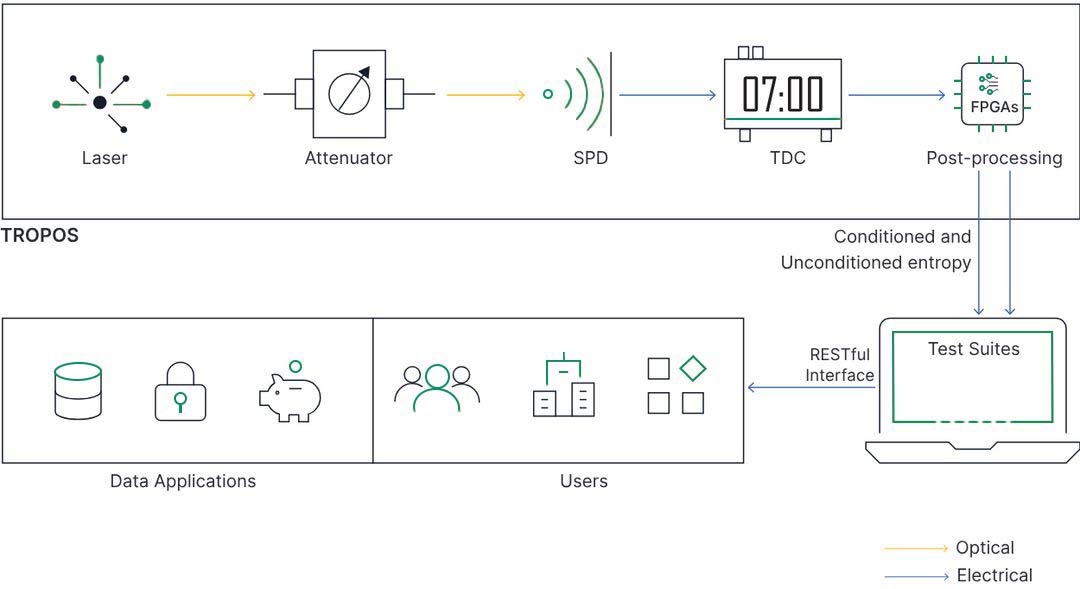Quantum Random Number Generator (QRNG) doesn't rely on mathematical algorithms. QRNG generates randomness from a true quantum source, thereby creating a greater degree of unpredictability and security for every application.
QRNG is an incredibly advanced deep technology that uses a combination of semiconductor technology, optoelectronics, high-precision electronics, and quantum physics to produce randomness at the very deepest level possible. This quantum-based process provides the highest possible quality of entropy for your most critical systems.
Traditional random number generators, such as PRNGs and TRNGs, are based on deterministic logic. When all the input variables are known, they can reproduce their outputs. This predictability introduces entropy limitations, leaving systems exposed to potential threats.
QRNGs are innovative because they utilize the inherently random properties of quantum physics that offers unpredictable scientifically proven randomness by
Protect sensitive information across all environments using the industry’s most advanced, unified quantum security platform. enQase empowers your organization to future-proof its framework and minimize risk.
A laser emits a stream of photons, the fundamental particles of light.
These photons are refined to a single-photon level using variable optical attenuators.
Each photon is directed to a Single Photon Detector (SPD).
Using external time references, the "Time-of-Arrival" of individual photons is recorded to generate random numbers.
The following diagram depicts the step-by-step process from photon generation to random number output that is unconditionally secure. First, light is produced from a laser source, then attenuated down to almost a single-photon level by a variable optical attenuator.
Once the photons have been attenuated, they are sent onto an SPD (Single Photon Detector), and the time bin at which the photon detections are recorded through an external time reference.
Since photons exhibit quantum behavior, the detection time bin can never, in principle, be known in advance, even though we are often able to know the other aspects of the experiment (preparation, propagation, and detection). The randomness finally collapses into a specific time bin only at the point of detection.

Don't keep your critical systems vulnerable to obsolete randomness. Secure them with quantum-grade protection. Act now and bring unbreakable security to your organization.
A QRNG is a device that generates truly random numbers using the inherent unpredictability of quantum physics, rather than relying on mathematical algorithms or deterministic processes.
Traditional random number generators (PRNGs/TRNGs) use deterministic logic, making their outputs potentially predictable. QRNGs harness quantum processes, such as the detection time of single photons, to produce randomness that is fundamentally unpredictable and cannot be replicated, ensuring higher security.
Quantum randomness provides the highest quality of entropy, making cryptographic keys and security protocols far more robust. This unpredictability is crucial for protecting sensitive data and systems from sophisticated attacks.
QRNG uses a laser-based quantum source to generate photons, which are detected at the single-photon level. The detection time of each photon, governed by quantum uncertainty, is used to generate random numbers. This process ensures that the generated numbers are truly random and secure.
QRNGs support seamless integration through RESTful APIs, allowing random numbers to be delivered directly to applications and systems without major changes to existing infrastructure.